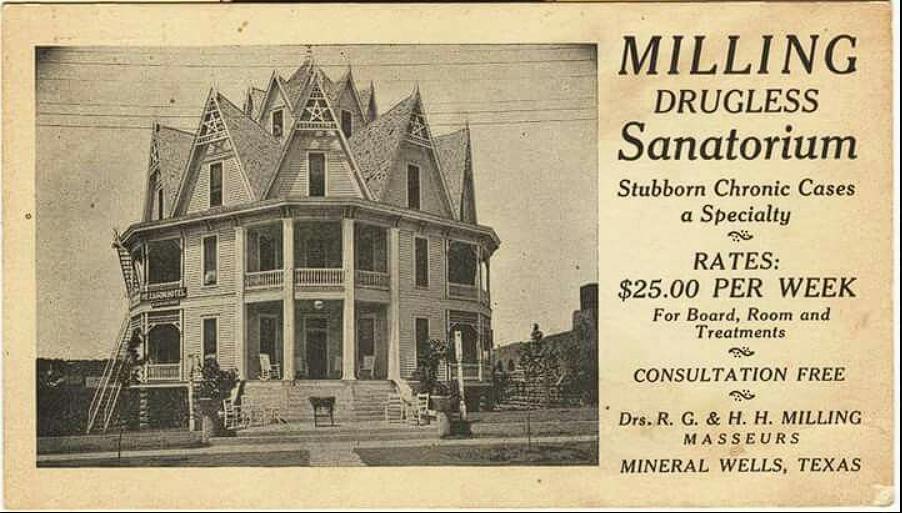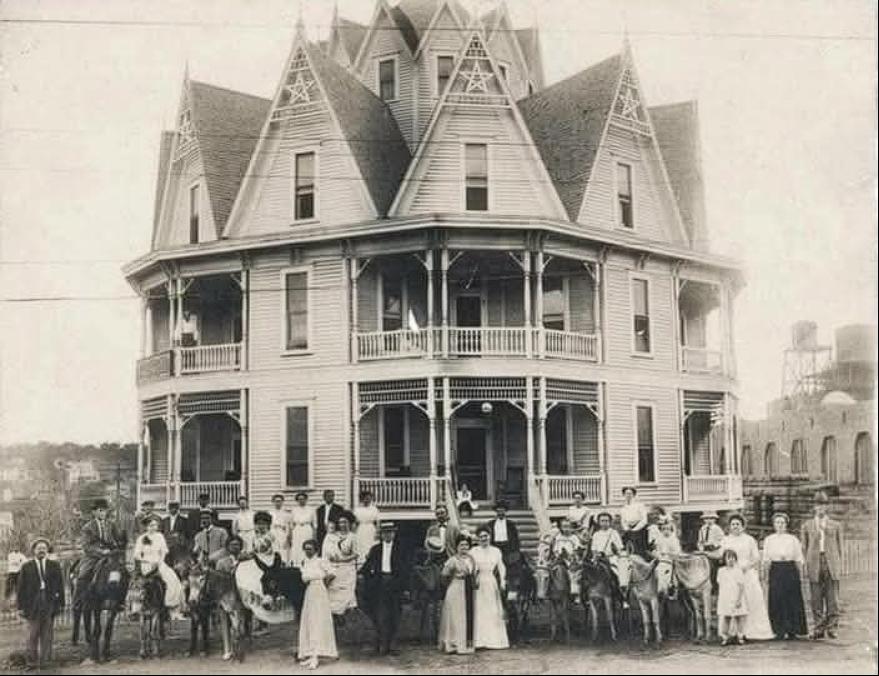The Unique Design and Vision Behind the Hexagon House Hotel
The Inspiration from Nature
The Hexagon House Hotel in Mineral Wells, Texas, was more than just a place to stay; it was an architectural wonder inspired by nature. Its creator, David Galbraith, was fascinated by the efficiency and symmetry of honeycombs. Drawing from this inspiration, he designed the entire hotel with six-sided rooms, mimicking the natural engineering of bees.
Galbraith, who is also credited with inventing the paper clip, was a man of innovation and creativity. His decision to apply hexagonal design principles to a hotel made it a one-of-a-kind structure that stood out among traditional rectangular buildings.
A Groundbreaking Architectural Achievement
Built between 1895 and 1897, the Hexagon House Hotel was an extraordinary example of forward-thinking architecture. The structure’s honeycomb-inspired layout was not just visually striking but also highly functional. The six-sided rooms provided better spatial efficiency, and their unique configuration created a sense of openness and interconnectedness rarely seen in buildings of its time.
Beyond its design, the hotel was an early adopter of modern conveniences. It was the only hotel in town with electricity, a feature that made it even more attractive to visitors seeking comfort and luxury.
Natural Climate Control Before Air Conditioning
One of the most impressive aspects of the Hexagon House Hotel was its innovative approach to climate control. At a time when air conditioning did not exist, staying cool in the Texas heat was a challenge. Galbraith’s design tackled this issue by ensuring that most rooms had windows facing three different directions. This strategic placement allowed for optimal cross-ventilation, keeping the interior cool even during the hottest summers.

The Craftsmanship and Materials That Brought It to Life
High-Quality Building Materials
The Hexagon House Hotel was constructed using some of the finest materials available at the time. Its core structure was built with long-leaf yellow pine, known for its durability and strength. To protect against the elements, the exterior walls were covered in cypress siding, a material valued for its resistance to rot and insects.
Rather than relying on modern fasteners, the builders used traditional woodworking techniques. Wooden pegs and square nails held the structure together, demonstrating the level of craftsmanship involved in its construction. The roof was covered with hand-split cypress shingles, adding another layer of durability and aesthetic appeal.
Intricate Interior and Stonework
Inside, the hotel featured stunning “Heart of Pine” wood paneling, giving it a warm and inviting atmosphere. This type of wood, taken from the dense core of pine trees, was prized for its rich color and longevity.
Two skilled stone masons from England were brought in to complete the hotel’s stonework. Their expertise added an extra touch of elegance, reinforcing the hotel’s reputation as a masterpiece of craftsmanship.
A Unique Lodging Experience
The four-story hotel featured 30 rooms, each hexagonal in shape. Unlike modern hotels with private bathrooms, the Hexagon House followed a different approach—each pair of rooms shared a single bath, a common practice in the late 19th and early 20th centuries.
Despite this setup, the hotel offered an experience unlike any other. Its unusual architecture, comfortable amenities, and innovative design made it a sought-after destination for travelers.

The Rise and Fall of the Hexagon House Hotel
A Popular Attraction in Its Prime
At its peak, the Hexagon House Hotel hosted around 40 guests per week. However, it wasn’t just a place for lodging—it was an attraction in itself. Many people visited the hotel simply to admire its unique design, marveling at its hexagonal rooms and the ingenuity behind its construction.
Its reputation extended beyond Mineral Wells, drawing in curious travelers and architecture enthusiasts who wanted to witness this one-of-a-kind building firsthand.
The Decline of Tourism
As the years passed, the tourism industry in Mineral Wells began to decline. The 1930s and 1940s were particularly challenging times, with economic struggles and shifts in travel trends leading to a reduced number of visitors.
With fewer guests staying at the hotel, maintaining the structure became increasingly difficult. The revenue generated was no longer enough to cover the costs of upkeep, and the once-thriving landmark slowly began to deteriorate.
The Demolition of a Landmark
By 1959, the Hexagon House Hotel had reached the end of its journey. Unable to sustain itself financially, and with maintenance costs becoming unmanageable, the building was demolished.
Its loss marked the disappearance of one of Texas’s most unique architectural achievements. Though the physical structure no longer stands, its story lives on as a testament to innovation, craftsmanship, and the remarkable vision of David Galbraith.

The Legacy of the Hexagon House Hotel
A Lasting Influence on Architecture
While the Hexagon House Hotel is gone, its impact on architectural design remains. The concept of hexagonal structures has since been explored in various fields, including sustainable housing and futuristic urban planning. Galbraith’s vision of efficiency and harmony with nature continues to inspire architects and designers today.
Remembering a Piece of Texas History
Despite its demolition, the Hexagon House Hotel is still remembered by historians and locals as a unique and significant part of Mineral Wells’ past. Archival photos, historical documents, and personal recollections help keep its memory alive.
Could It Have Been Saved?
Many preservationists today lament the loss of the Hexagon House Hotel. Had it survived into the modern era, it might have been restored and transformed into a historical landmark or museum. Its unique design and rich history would have made it a prime candidate for preservation efforts.
Conclusion: A Lost Gem of Architectural Ingenuity
The Hexagon House Hotel was more than just a building—it was a bold experiment in architecture, an innovative response to environmental challenges, and a symbol of creativity. From its honeycomb-inspired design to its advanced climate control methods, it was a marvel of its time.
Although it no longer stands, its story continues to captivate those who appreciate architectural history and the ingenuity of past generations. The Hexagon House Hotel may be lost, but its legacy endures as a reminder of what visionary design can achieve.
